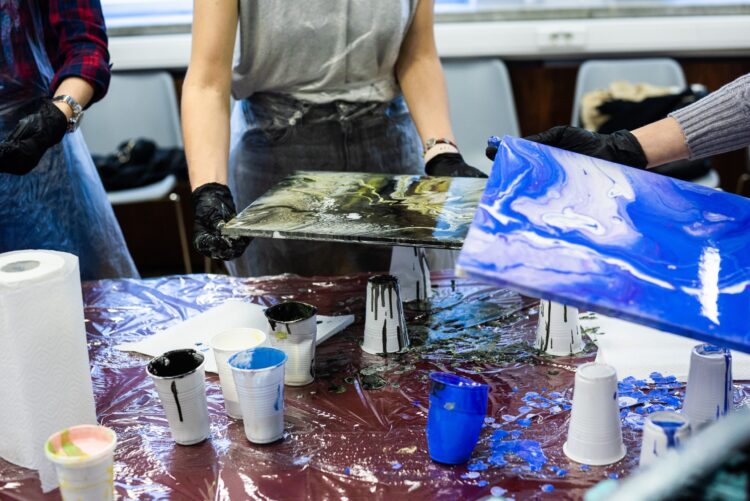When a person has experienced something difficult, painful or scary, it may be difficult for them to find the right words to share how they felt in that moment or after the fact. When words fail, it can be helpful for people to find other ways to express themselves.
The Healing Power of Art
As we learn more about how the creative arts can aid in recovering from mental illness and trauma, it becomes less and less surprising that such famous people as Vincent Van Gogh, Pablo Picasso, Jackson Pollock, and Georgia O’Keefe struggled with mental health and used their art as a creative outlet for their experiences. The arts are another way for people to navigate the healing process around mental health, trauma, and other difficult life experiences without having to confront those frightening moments as directly. The arts have been found to have many benefits within a therapeutic context, including:
- Activating reward pathways in the brain, making the person feel good
- Reducing stress levels
- Improving mood
- Reducing symptoms of depression, anxiety, PTSD, and dementia
- Pain management
- Improving sense of personal control
Engaging in the arts can give a person a healthy outlet for their struggles, so that they are less likely to engage in maladaptive behaviors such as self-harm, substance abuse, and acting out toward others.
On Her Own Terms
In her TED Talk, artist Brandy Burgett shared how she was able, in her adolescence and early recovery from mental illness, to use art to accomplish things she could not manage with words:
- Escaping her difficult feelings
- Distracting herself from her pain
- Confronting challenging ideas
- Understanding her own suffering
- Overcoming her mental illness
- Starting conversations she could later finish with words
Benefits of Art Therapy
There are many things about art therapy that make it a good option for engaging with patients:
- Addresses stigma – Because art bypasses spoken or written language, it can help people who do not relate to mental health struggles to understand the artist’s pain and suffering, even if the artist and observer do not share a common language.
- Builds community – People who have experienced trauma, loss, or mental illness may feel less alone, as they see themselves in the artist’s work.
- Is cost effective – While high-end art supplies can be quite expensive, the basic tools to get started are minimal and do not cost much.
- Is portable – Not only can the art therapist or the patient travel to any desired location to engage in art therapy, but the patient can continue to utilize the skills they build in creative arts therapies even when the therapy sessions have ended.
- Is not limited by demographics – Art therapies can take many forms and be adapted for use with patients of any age, gender, or skill level.
An International Mental Health Crisis
Worldwide, around 25 percent of adults will experience a mental health struggle at some point in their life, with many of these conditions manifesting in adolescence. Like Brandy Burgett, many of the people who are diagnosed with a mental health related condition may find it difficult to put into words what they have experienced. This is due, in no small part, to the fact that trauma can alter how the brain handles speech but has less impact on a person’s ability to paint, draw, act out, or otherwise depict their feelings. As a result, art therapies have become increasingly popular as an intervention to supplement more traditional talk therapies. While an individual engaging in art on their own will experience mental health benefits, a trained mental health therapist can guide people through the healing process by blending therapeutic interventions with artistic expression.
Gaining Traction
As art therapies become more widely recognized and accepted, they are being found in more places than ever before. More and more nursing homes are utilizing music and art therapy to slow the decline of patients with dementia. The Department of Veterans Affairs and the Department of Defense are collaborating with the National Endowment for the Arts to use art activities to address mental health for service members, veterans and their families. Organizations like the Foundation for Art and Healing are engaged in ways to use evidence-based arts programming to address chronic mental, physical and social problems.
At Highland Hospital in West Virginia, we are also pleased to be able to offer therapeutic interventions in the form of creative arts. To learn more about our specific programming options, please contact a member of our team.






